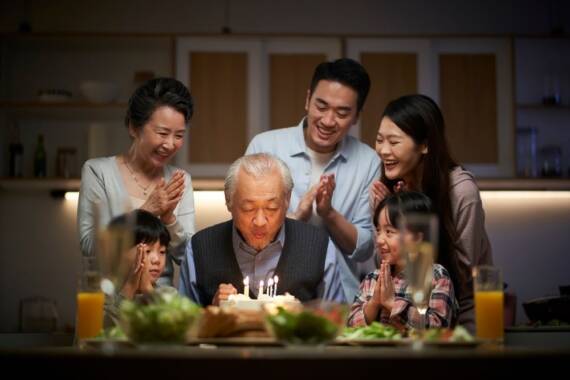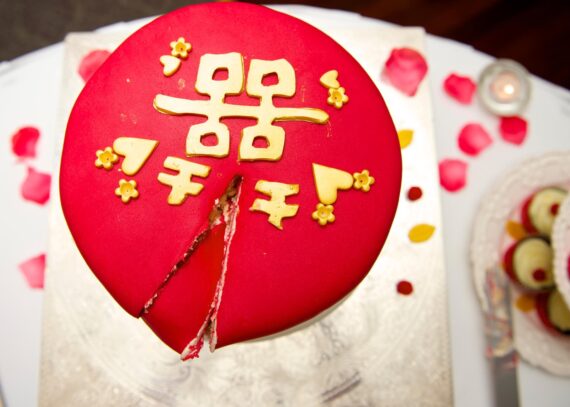The Mandarin Blueprint Guide to Chinese Festivals
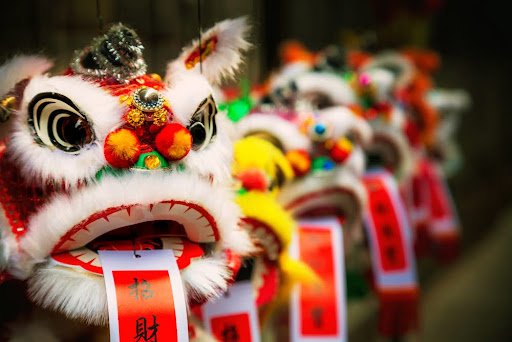
Welcome to the brilliant world of Chinese festivals, a kaleidoscope of traditions that vividly depicts China’s rich cultural tapestry. Here at Mandarin Blueprint, we’re passionate about diving deep into all things China, and what better way to immerse yourself in this fascinating culture than exploring its colorful festivals?
Whether you’re a seasoned Sinophile or just starting your Mandarin journey, understanding these festivals is key to grasping the heart and soul of Chinese life. From the raucous fireworks of Spring Festival to the tranquil beauty of the Mid-Autumn moon, each festival is a doorway into the depths of Chinese history, customs, and, of course, language.
So, buckle up as we take you on a tour of Chinese festivals, the pulsating heartbeats of a civilization that continues to captivate the world.
Historical background of Chinese festivals
Alright, let’s dive into the history of Chinese festivals. These aren’t just fun days off, they’re like a time machine, taking us back to ancient China. Each festival’s origin story is often wrapped in legend and folklore. For example, think about the Dragon Boat Festival — it’s not just about boat races and sticky rice dumplings. It’s rooted in the story of a patriotic poet, Qu Yuan. These festivals are like living history lessons, showing how ancient customs have shaped modern China.
But it’s not all about the past. These festivals are alive, evolving with time while keeping their core essence. They’re a mix of old and new, showing how China embraces modernity while honoring traditions. By understanding these festivals, we get a unique insight into the Chinese psyche — how they blend respect for ancestors with contemporary celebrations.
So, as we explore each festival, remember that we’re not just talking about days on a calendar. We’re unpacking centuries of history, culture, and emotion, all wrapped up in these incredible celebrations. This journey isn’t just about learning what these festivals are; it’s about understanding the “why” behind them. And trust us, it’s a fascinating story.
Related Reading: How to Learn Chinese Characters in Seconds
Major Chinese festivals
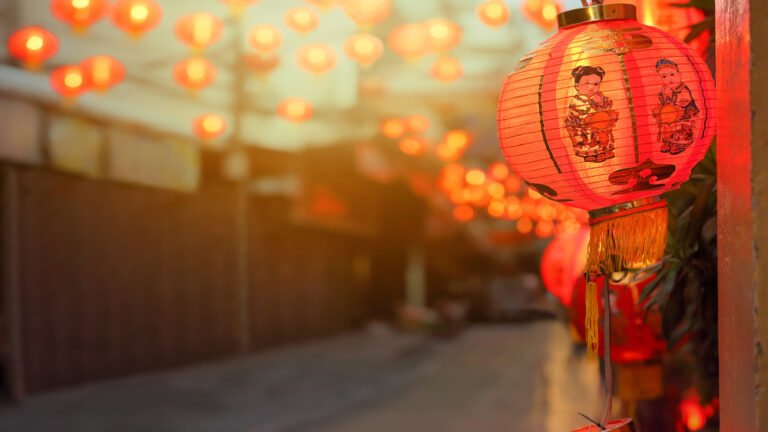
In the vibrant Chinese culture, festivals weave a story of history, tradition, and community spirit. These festivals aren’t just celebrations (although they are that too!). They’re a living, breathing part of China’s cultural heritage. Let’s dive into some of the most significant ones.
Spring Festival (Chinese New Year)
It’s the start of the lunar new year and the most important festival in China. Families gather for reunion dinners for the Chinese New Year, often featuring traditional dishes like dumplings. Red decorations and firecrackers are everywhere, symbolizing prosperity and driving away bad luck. Giving red envelopes (hongbao) filled with money is a common tradition, especially for children.
Mid-Autumn Festival
Centered around the lunar calendar’s fullest moon, this festival symbolizes reunion. With various fillings, mooncakes are a staple, often exchanged among friends and family. Lanterns and moon gazing also play a significant role, alongside myths like the story of Chang’e, the moon goddess.
Dragon Boat Festival
Commemorating the patriotic poet Qu Yuan, this festival features dragon boat races as its centerpiece. Communities gather by rivers to cheer on the racing teams. Eating zongzi, sticky rice dumplings wrapped in bamboo leaves, is another key tradition.
Qingming Festival
This is a time for paying respects to ancestors, often involving visits to family graves to clean and make offerings. The Chinese Qingming Festival also marks the onset of spring, making it a popular time for outdoor activities like kite flying.
Related Reading: Exploring the Symbols and Rituals of Chinese Death Customs
Lantern Festival
Celebrated on the 15th day of the first lunar month, it marks the end of Chinese New Year festivities. Streets are adorned with lanterns of all shapes and sizes, and there’s often lion dancing, dragon dancing, eating tangyuan, and sweet rice balls, symbolizing family unity.
Each festival offers a unique glimpse into Chinese culture, blending history, tradition, and contemporary practices.
Exploring Lesser-Known Chinese Festivals
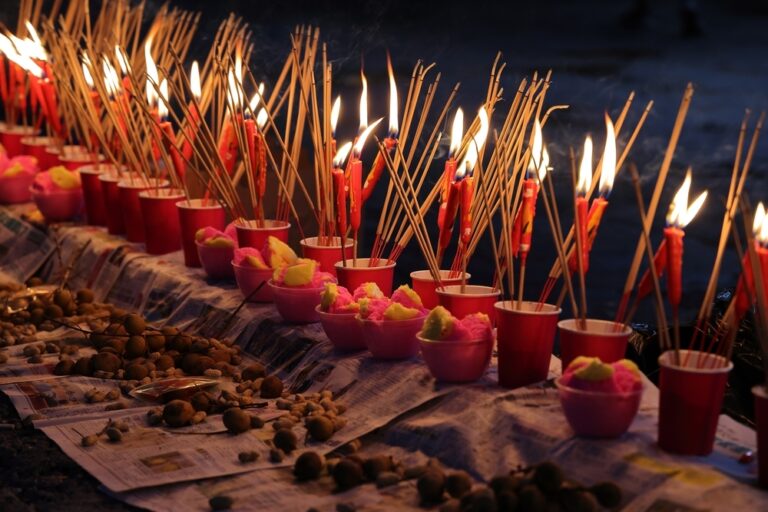
Beyond the major festivals, several lesser-known yet culturally significant festivals offer a deeper insight into Chinese traditions.
Double Seventh Festival (Qixi Festival)
Celebrated on the 7th day of the 7th lunar month, it’s inspired by the romantic story of two lovers separated by the Milky Way, allowed to meet just once a year. Activities include girls demonstrating their domestic skills and couples praying for happiness and marriage.
Laba Festival
Traditionally a time for sacrificial offerings to ancestors, Laba is celebrated by eating Laba porridge. This festival, occurring on the 8th day of the 12th lunar month, is also significant for Buddhists, commemorating the enlightenment of the Buddha.
Winter Solstice Festival (Dongzhi Festival)
One of the most important festivals, but far less well-known than others, this is a time for families to gather and eat foods like dumplings in northern China or tangyuan in the south. It symbolizes the coming of longer days and the increase of positive energy.
The Chinese Moon Festival (Zhongqiu Jie)
This festival, synonymous with the Mid-Autumn Festival, is a time for family reunions, moon worship, and moon gazing. The mooncake is the central culinary tradition, representing completeness and abundance.
Double Ninth Festival (Chongyang Festival)
Held on the 9th day of the 9th lunar month, the Chongyang Festival is associated with health, longevity, and climbing high places. Activities include hiking, enjoying chrysanthemum, and drinking chrysanthemum wine.
Hungry Ghost Festival (Zhongyuan Jie)
This festival is a part of the Ghost Month, where it’s believed that the gates of the afterlife open, and spirits wander the earth. People offer food and burn incense to appease these spirits and pay homage to their ancestors.
National Day (Golden Week)
Starting on October 1st, this week-long holiday celebrates the founding of the People’s Republic of China in 1949. It’s marked by patriotic displays, parades, and a surge in domestic tourism as people travel across the country.
Each of these festivals enriches the cultural landscape of China, adding depth and diversity to the nation’s traditions and celebrations.
Related Reading: 20 Powerful Ways to Improve Your Chinese Pronunciation
Cultural significance of Chinese festivals
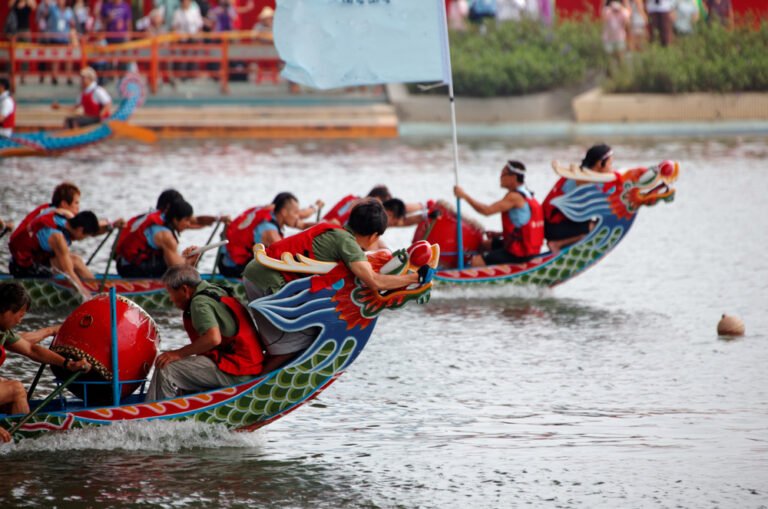
Chinese festivals are more than just holidays. They’re the cultural heartbeat of China. Each festival is a vibrant expression of Chinese society’s values, beliefs, and history. They’re like a living museum, showcasing the seamless blend of ancient traditions with modern life.
These festivals keep traditions alive, ensuring that the rich world of Chinese history and folklore is passed down through generations. They’re a crucial way for younger generations to connect with their heritage, even in today’s fast-paced, globalized world.
Beyond tradition, these festivals are a lens into the Chinese way of life, revealing insights into family dynamics, societal values, and even the philosophical outlook of the people. Understanding these festivals offers a deeper appreciation of Chinese culture and, by extension, the language itself.
So, as we explore these festivals, we’re not just learning about dates and customs. We’re delving into the soul of a nation where ancient wisdom meets modern vibrancy.
Related Reading: Do You Need to Learn Chinese to Visit China?
Learning Mandarin through festivals
Diving into Chinese festivals isn’t just about cultural exploration. It’s also a fantastic way to supercharge your Mandarin learning journey. Each festival is a treasure trove of language lessons.
Learning the names and key phrases associated with these festivals is great for vocabulary building. From simple words like “mooncake” (月饼 yuèbǐng) during the Mid-Autumn Festival to more complex phrases used in greetings during the Spring Festival, every word adds a layer to your Mandarin skills.
Then, there’s the storytelling aspect. Chinese festivals are rich in legends and myths. Understanding these stories gives you insights into the language’s nuances and idioms. It’s like piecing together a puzzle where language and culture fit perfectly.
And let’s not forget the songs and poems. Traditional festival music and poetry aren’t only beautiful but are packed with linguistic subtleties. These pieces often use classical Chinese, offering a different angle to the language.
In short, embracing these festivals in your learning process makes Mandarin a language to learn and a culture to experience. Every festival is an opportunity to practice listening, speaking, reading, and even writing, making your journey into Mandarin both enriching and enjoyable.
Related Reading: Tips for a First-Time Visit to China
Experiencing festivals in China
Experiencing Chinese festivals firsthand in China is an unforgettable adventure. Each festival offers unique activities and atmospheres, perfect for cultural immersion and language practice.
For instance, witnessing the Spring Festival in Beijing or Shanghai is an experience of a lifetime. The streets come alive with decorations, lion dances, and the sound of firecrackers. It’s an ideal setting to practice Mandarin by interacting with locals during this festive time.
The Dragon Boat Festival is best experienced by the water, where the boat races are thrilling to watch. Cities like Hong Kong and Hangzhou offer some of the most spectacular races. Here, you can pick up sports-related vocabulary and even try traditional festival foods.
Visiting rural areas during the Chinese Qingming Festival provides a deeper understanding of ancestral rituals. It’s a chance to learn about historical and cultural aspects that are often overlooked in urban settings.
For those interested in culinary traditions, the Laba and Winter Solstice festivals offer a plethora of traditional foods. Engaging with locals during these times provides an excellent opportunity to learn food-related Mandarin phrases.
Remember, each festival has its own charm and offers a unique way to deepen your understanding of Chinese culture and language.
Related Reading: Is Chinese Hard to Learn?
Festivals and global influence
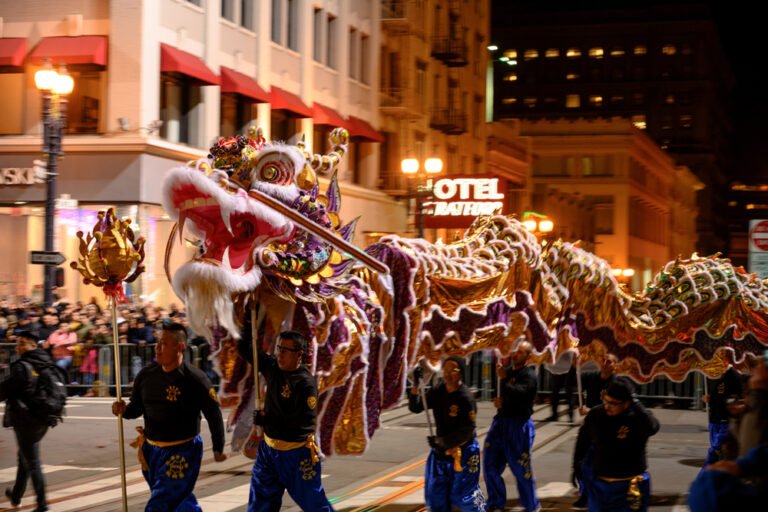
The charm of Chinese festivals has crossed borders, making a significant impact globally. Let’s explore how these celebrations have become part of the world’s cultural fabric.
Chinese New Year, for instance, is now a global phenomenon. From London to San Francisco, cities worldwide come alive with parades, dragon dances, and red lanterns. This is a fantastic opportunity for Mandarin learners to engage in cultural festivities, no matter where they are.
The Mid-Autumn Festival, too, has found a place in various countries, celebrated in Asian communities with mooncakes and lanterns. It’s a perfect time to understand the diaspora’s influence on local cultures.
Other festivals like the Dragon Boat Festival have become international sports events, attracting participants and spectators from different countries and offering a blend of cultural exchange and language learning opportunities.
These global celebrations not only spread Chinese culture but also encourage a deeper understanding and appreciation of it, fostering cross-cultural connections that enrich the global tapestry.
The essence of Chinese festivals
We’ve journeyed through the colorful and diverse world of Chinese festivals, each offering a unique glimpse into the heart of Chinese culture. These festivals teach us about family, tradition, and the ever-evolving nature of culture. Whether you’re learning Mandarin or just fascinated by Chinese culture, understanding these festivals deepens your connection to a civilization that has captivated the world for centuries.
So, as you continue exploring Mandarin and Chinese culture, remember that each festival is a chapter in a grand, ongoing story, inviting you to be a part of its narrative.
Now, are you ready to accelerate your own Mandarin learning journey?
Discover your true potential in mastering Mandarin with our FREE Mandarin Fluency Scorecard. In less than 60 seconds, you can gain a comprehensive assessment of your current Chinese skills.
Imagine pinpointing exactly what’s holding you back and unlocking a personalized guide to fluency. You’ll get a custom report with immediate action steps tailored to your unique learning path.
Don’t wait. Click the button to transform your Mandarin learning experience. It’s quick, easy, and completely free. Your journey to fluency is just a click away.<Yes! Take the Scorecard.>







